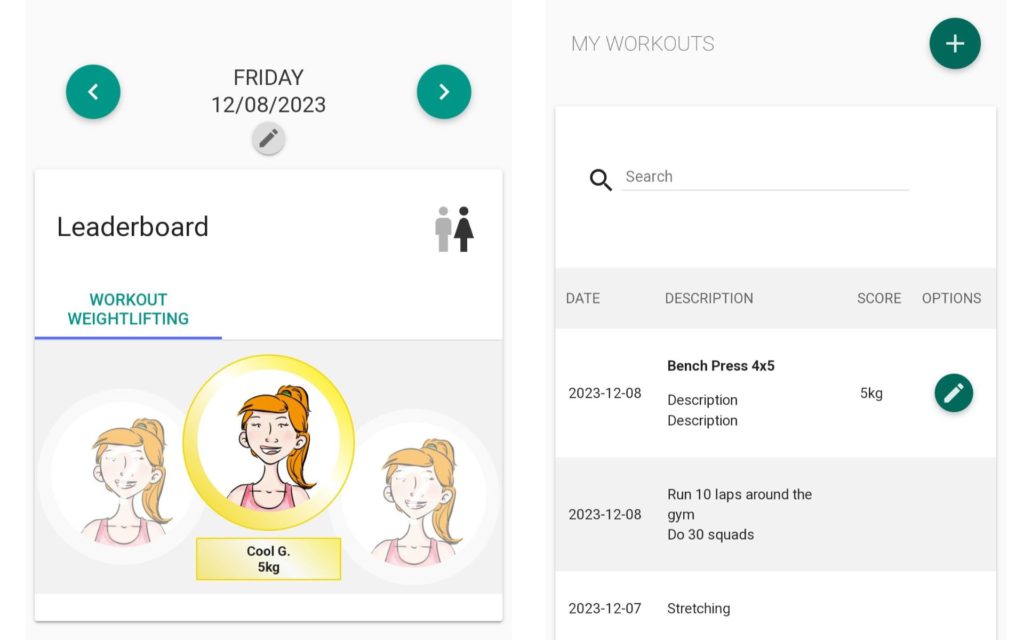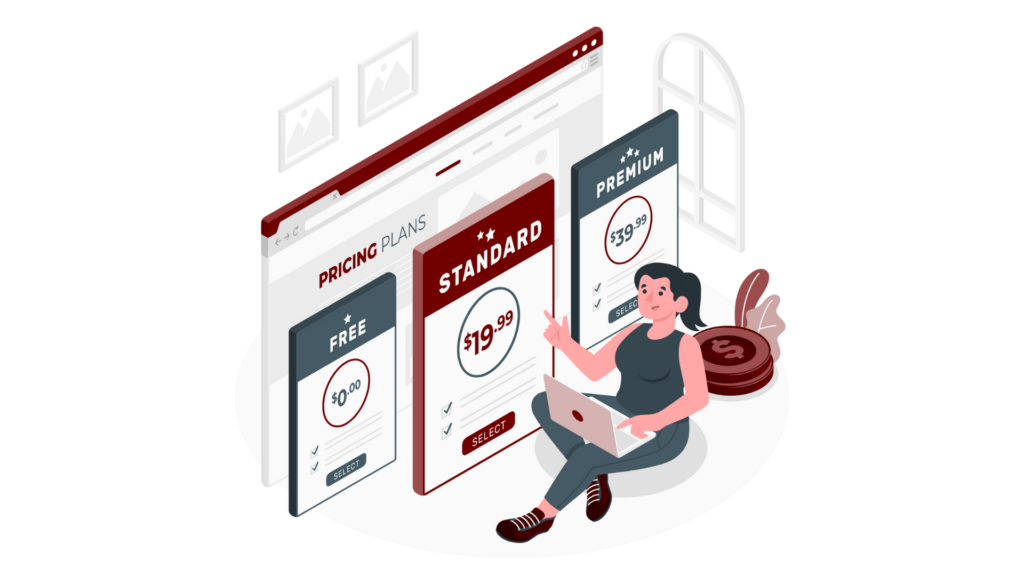In 2024, the fitness industry continues to pulse with vibrant energy, fueled by a growing interest in health and wellness. Amidst this dynamic backdrop, potential gym owners and investors are asking a critical question: are gyms profitable?
Understanding the nuances of gym profitability, especially in a market as competitive as today’s, requires a deep dive into not just the potential earnings but also the challenges and strategies pivotal to running a successful gym.
Gym ownership is far more complex than it might appear. It involves managing fixed costs, optimizing operations with a robust gym management software, and developing business strategies that can adapt to changing consumer preferences. With gyms now expected to offer cutting-edge facilities and personalized experiences, the stakes are high.

Yet, the potential earnings in 2024 show promising figures, suggesting that with the right approach, owning a gym could indeed be a good investment. This article will explore what it really takes to turn a profit in the fitness industry. From the crucial role of a gym membership management software in keeping operational costs in check to innovative business strategies that can enhance a gym’s profitability, we’ll cover the essential aspects that every gym owner needs to know.
Join us as we unpack whether stepping into the gym industry is a step toward financial success or a financial misstep, making this a must-read for anyone considering venturing into this bustling market.
How much money do gyms make?
The fitness industry is booming, with people prioritizing their health and well-being more than ever before. This increased interest translates into potential profits for gym owners, but is owning a gym really the path to financial success? Let’s take a look at a gym’s revenue streams and examine the factors affecting profitability.

In 2020, the global gym market was worth approx. 96.7 billion dollars. It is estimated that there were more than 184 million gym users in the US at that time. It is therefore safe to say that these figures for 2024 are even higher.
When considering whether owning a gym is a profitable venture, it is critical to understand the various revenue streams that contribute to a gym’s financial success. These streams depend on several factors, including the location of the gym, the demographic group it targets, and whether it is a boutique or large-scale operation.
How much money gyms typically make?
- Revenue sources: Gyms generate income through multiple streams including membership fees, personal training sessions, group classes, and sales of merchandise and supplements. Additional revenue might come from spa services, childcare, and special events.
- Gym membership fees: The primary source of income for most fitness is gym memberships fees, which can vary widely depending on location, amenities, and type of gym. Larger chain gyms might charge anywhere from $20 to $100 per month, while boutique studios can charge significantly more.
- Personal trainers and fitness classes: These services often command premium prices. Personal training can range from $50 to $100 per hour, and specialized classes may cost members an additional fee on top of their regular membership.
- Merchandise sales: Sales of gym-related products, such as supplements, apparel and workout equipment, provide an additional layer of revenue. While margins on these products can vary, they help increase overall profitability and brand loyalty.
- Additional services: Many gyms also offer other services, such as nutritional counseling, physiotherapy and massage, which not only increase revenue, but also improve member retention by offering a holistic approach to health.
- Annual revenue: Depending on the size and location, annual revenue for gyms can range from less than $100,000 for small, independent gyms to several million dollars for larger facilities.
- Profitability: While revenue can be high, gyms also face substantial fixed and variable costs including rent, equipment maintenance, staff salaries, and utilities. Profit margins typically range from 2% to 15%, but can be higher for niche or boutique gyms with a unique offering or market.
Is starting a gym profitable?
Starting a gym can be a profitable venture, but it involves significant initial investment and careful financial planning. The profitability of owning a gym depends on effective financial management and strategic business planning.
It is essential to balance revenue streams with ongoing expenses such as staffing, equipment maintenance and marketing. Gyms that manage to control fixed and variable costs while maximizing major revenue channels tend to perform better financially.
Support in running and profitability of the gym is also helped by the fitness studio management software. They help ensure maximum automation of operations, which in turn leads to savings and increased profits.

Successful gym owners – comprehensive overview of start-up costs
- Equipment: One of the largest expenses for a new gym is purchasing equipment. Gym expenses and this includes weights, machines, cardio equipment, and specialized gear for classes. Costs can vary widely depending on whether fitness machines you purchase, and are they new or used equipment, opt for high-end brands, or lease equipment instead of buying it.
- Real Estate: The monthly cost of acquiring space for a gym depends on location and size. Choices range from leasing a space in a city center to buying property in a suburban area. Costs of private gyms are influenced by local real estate market conditions, the size of the space required, and its current condition (i.e., ready to use vs. needing renovation).
- Staffing: Salaries for gym staff such as personal trainers, receptionists, and maintenance personnel are ongoing costs that begin from day one. The number of staff needed depends on the gym’s operating hours, the range of services offered, and the level of customer service intended.
- Marketing: Attracting members to a new gym requires successful business marketing. This might include digital advertising, local print ads, promotional events for your health clubs, and partnerships with local businesses. Initial marketing efforts are usually more intense, requiring a substantial budget to build awareness and attract members – so you can use to that gym marketing software.
Do gyms make a lot of money?
To navigate these startup gym businesses effectively, a robust financial plan is crucial:
- Market Research: Understanding your target demographic, competitor landscape, and local market trends is vital for setting realistic membership pricing and creating a service package that appeals to your customer base and gym profit margins.
- Break-Even Analysis: Calculate the number of memberships you need to sell to cover your ongoing expenses. This will help you determine pricing strategies and project your profitability timeline.
- Financial Projections: Create realistic financial forecasts that consider revenue streams from memberships, personal training, classes, and merchandise sales. This will help you secure funding and track your progress towards profitability.

Starting a gym can be a profitable endeavor, but it requires careful planning, financial responsibility, and a deep understanding of your target market. By carefully considering startup costs, creating a solid financial plan, and staying adaptable to industry trends, you can turn your fitness dream into a thriving business.
How do gym owners make money in this business? By using proven methods, such as automating business operations. This provides a gym management software.
Checkout some testimonials and case studies!
“I have been using WodGuru for 6 months. Previously, I did everything manually, which required a lot of time every day to update all registrations, payments, respond to a lot of messages, etc. At the moment, the time I used to spend on those, I can devote to the development of the studio, because most of it is done for me. Additionally, each customer can check everything on an ongoing basis, pay for the membership or sign up for classes. The rules are very clear and the system is transparent. Moreover, I can check everything on my phone at any time – which makes it easier. Working time at reception has also become much shorter – there are definitely fewer questions about simple issues such as signups/signouts. A huge advantage is that WodGuru is constantly making improvements and listens to suggestions regarding our needs and new ideas. Their help desk always answers our questions very quickly. I recommend it!”
Average gym profit margin
Understanding who a particular gym is best for influences marketing strategies and service offerings. It is very important to create a place where the gym owner will gather the right target group.
For example, a gym targeting young professionals may focus on offering early morning and late evening classes, while a gym targeting retirees may emphasize low-impact exercise and social events.
| Type of Gym | Average profit margin | Source of info |
|---|---|---|
| Large Chain Gyms | 15-20% | RunRepeat |
| Boutique fitness studios | 25-40% | Market Analysis Studies by SoulCycle |
| CrossFit Boxes | 20-25% | National Association of Professional Trainers |
| Yoga studios | 20-40% | Yoga Alliance |
| Franchise Gyms | 10-15% | FranchiseHelp |
| Personal Training Studios | 35-45% | RunRepeat |
| Community Centers | 5-10% | RunRepeat |
| Traditional gyms | 10-15% | Health & Fitness Association (IHRSA) |
| Specialty Studios (Zumba, Dance Pole) | 30-40% | Health & Fitness Association (IHRSA) |
| Pilates Studios | 20-30% | Club Industry |
| Swimming pool and aquatic centers | 10-15% | National Swimming Pool Foundation |
What is essential in determining your business model is the question of what type of place you will operate. Boutique gyms often offer specialized experiences that may carry higher prices, such as classes in a popular fitness trend (such as spin, barre, or CrossFit).
These gyms also often cultivate a sense of community, which can increase member loyalty and reduce turnover. On the other hand, large gyms benefit from economies of scale and can offer a wider range of services, but may struggle with higher overhead costs. They may also involve less gym owner salary.
Gym profit margin – what you should know?
- Large Chain Gyms: These gyms and fitness clubs often have lower profit margins due to high overhead costs but make up for it with volume and diverse revenue streams.
- Boutique Studios: Specializing in specific fitness niches (like spin, barre, etc.), these gyms usually have higher margins due to premium pricing and a targeted client base.
- CrossFit Boxes: With a dedicated community and robust membership fees, CrossFit gyms maintain solid profit margins.
- Specialty Studios: These focus on disciplines like yoga or Pilates and often command higher fees per class, translating to greater margins.
- Franchise Gyms: These benefit from brand recognition and corporate support but pay royalties, impacting their margins.
- Personal Training Studios: High personalized service allows for charging premium rates, resulting in higher profit margins.
- Community Centers: Often subsidized or non-profit, these have lower margins and aim primarily at community service rather than profit.
Is owning a gym passive income?
The appeal of passive income – making money with minimal effort – is undeniably attractive. But how do gyms make money? Owning a gym may seem like a ticket to a life of leisure, but the reality is far from lounging on a beach chair.
While gyms can be profitable businesses, they are definitely not passive income generators. There are definitely more ways to earn passive income than just owning a gym.
Let’s dispel the myth! Owning a gym requires significant active involvement. Gyms are complex operations with ongoing tasks such as staff scheduling, equipment maintenance, member relations and marketing initiatives. All of this requires constant attention and strategic decision-making.

Using facilities such as a gym management system makes running this business much easier. It allows you to automate tasks such as marketing, sales, pass payment, and class enrollment. Definitely, thanks to solutions such as WodGuru, the work becomes more pleasant, more intuitive, but still – it does not lead to the acquisition of passive income.
The fitness industry is dynamic. Staying in business requires adapting to new workout trends, competitor offerings and club members’ needs. An idle approach can quickly make a gym obsolete.
Fitness centers – especially smaller ones like personal training studios, group exercise classes or small gyms, thrive on a strong sense of community. Fostering member engagement and a positive atmosphere requires the owner’s active participation, whether by attending classes, interacting with members or addressing concerns.
How much can you make by owning a gym?
How much do gym owners make? Whether gyms make a lot of money is most often determined by several factors, such as location, type of gym, size of building, management and market conditions in a particular state. You also need to think about the best gym business plan.
The fitness industry is changing rapidly. As recently as 2021, the business was worth an average of $160 billion, but Strategic Market Research estimates the sector will grow by 171.75% by 2028, generating more gym revenues than $434.74 billion in profits.
How much money can be made running a successful gym? Most fitness entrepreneurs make more money by investing in more and more. Gyms generate revenue through many channels, such as membership fees, personal training, group classes and ancillary services such as merchandise sales and additional wellness services.

The location of a gym has a huge impact on a gym’s average revenue. Gyms in affluent neighborhoods or high-traffic urban areas often generate more revenue due to higher membership rates and a potentially larger customer base that can afford additional services. A unique selling proposition that makes a particular gym stand out from the competition is also important.
Successful gyms that maintain high customer retention rates through excellent service, the best personal trainer offer, community building and regular updates on equipment and classes tend to have more stable revenue flows. Customer retention is often more profitable than attracting new prospective clients.
How much does it cost to run a gym?
- Staff wages: Compensation for employees, including trainers, front desk personnel, and other staff members is essential.
- Rental or mortgage expenses: Costs associated with securing the physical space for the gym, either through renting or mortgage payments if the property is owned.
- Equipment leasing: If opting to lease rather than purchase, there will be ongoing costs for leasing fitness equipment.
- Capital expenditures (Capex): Initial outlays for purchasing gym equipment outright, if not leasing.
- Marketing and advertising: Allocating funds for marketing efforts is crucial to attract and retain gym members.
- Utilities and cleaning services: Expenses for utilities such as electricity and water are necessary, along with hiring cleaning staff to maintain a clean and sanitary environment.
- Accounting costs: Either hiring an accountant or investing in accounting software to manage the gym’s financial operations.
- Insurance needs: Maintaining comprehensive business insurance, including workers’ compensation, property insurance, and potentially other relevant policies.
5 strategies to pump up average gym revenue
The fitness industry is booming, but with so much competition, gyms must constantly innovate to stay ahead of the competition and increase gym income.
To increase revenue, owners, and managers can employ several strategies to turn gym revenues. These strategies focus on using technology, improving customer satisfaction and diversifying revenue sources. Each approach is designed not only to increase profitability, but also to strengthen the gym’s position in the market.
See the 5 key strategies we’ve put together so you can increase average revenue at your gym.
1. Automate your business with the help of gym management system
Long gone are the days of paper sign-up sheets and manual billing. Gym management software like WodGuru can change the rules of the game and run a fitness business.
Automate tasks such as membership management, scheduling, billing and access control. This frees up staff time to focus on member engagement and value-added services.
Members can easily book classes, track progress and manage their accounts online or through the mobile app. This convenience promotes satisfaction and reduces churn.

With gym management software you are able to make your gym’s profitability. As a gym owner, you can break even point and get more revenue for your gym businesses by:
- getting more membership fees thanks to online booking – it is not always easy to buy a pass directly from the gym, increasingly people prefer to do so online. The gym management system makes it possible to sign up online, but also to renew passes online without having to visit the gym;
- having full gym classes with online “Booking/Scheduling” options – the easy way to sign up for classes allows gym members to participate in group fitness classes they like or take advantage of the gym gear they care about. Fitness booking software will make them appreciate the opportunity to use the kind of facilities they need. It’s also a chance for you to always have a full room and see which classes are the most popular and profitable;
- implementing a “waitlist” – if you go to a fitness club, you know how frustrating it is when you can’t sign up for your favorite classes. What if, put yourself on the waiting list? When someone cancels, your waitlist members will jump in to fill the spot. You’ll always have a full room and happy passholders;
- monitoring revenue from various sources – you can increase your profits, with a pilates, martial arts or yoga studio software management system through various sources. It will help you automatically generate invoices, track payments, but also additional sales such as online stores.
2. Increase earnings by improving gym member satisfaction
Satisfied members are loyal members, and loyal members translate into steady revenue! Train your staff to be friendly, knowledgeable and helpful. Make every effort to address members’ concerns and create a welcoming environment. Offer fitness assessments, goal-setting workshops or personalized training plans.
This shows members that you care about their individual journey and keeps them engaged. Additionally, using a system like WodGuru helps increase engagement with your customers.

What benefits of WodGuru can help you increase customer engagement?
- easy class management – gym members can sign up for selected classes themselves, cancel classes or check when their favorite personal trainers are available.
- ability to enter waitlist classes – no more empty classrooms and wondering if a gym member can get into a class; the waitlist option allows you to sign up for the waitlist and receive a notification if there is room for you in the class.
- personalized customer accounts – this is a way to provide gym members with a place where they can find all their information, sports preferences or information about training goals.
- easy electronic payments – convenience for customers, with hassle-free and secure electronic payments.
- mobile app – Custom app for class signups, payments, and reminders.
What else can you do? Host community events, group challenges or healthy potlucks. Fostering a sense of community encourages members to stay motivated and keeps them coming back for more.
3. Bet on different sources of income
While membership sales are the main source of income for anytime fitness, explore additional revenue streams to maximize profitability:
Reach a wider audience by launching online training programs or live streamed classes. This allows you to reach a remote market and generate additional income. You can also bet on selling merchandise and premium services through a gym management system.

How else can you make money? Work with a registered dietitian to offer personalized nutrition plans or educational workshops. This is ideal for members seeking holistic health improvement and creates a new revenue stream.
Design and sell gym apparel, water bottles or workout accessories. Selling gym-branded apparel, workout gear, supplements, and other health-related products can provide an additional revenue stream while also promoting the gym brand. This generates additional gym profits while promoting the brand.
4. Make it easier to attract new members by combining technologies
Gym management systems provide valuable data on member behavior, usage patterns and class popularity. Use these insights to adjust offerings, optimize pricing and schedule classes on demand. That’s one of the options provided by this modern solution.

You can also bet on functionality such as integrating your business management system with your website. This allows any gym member to, in just a few seconds:
- purchase a pass directly from the site,
- renew a pass or purchase additional options,
- sign up for classes directly, through a dedicated registration form,
- use the schedule, linked to the website or Facebook.
What else provides opportunities to use technology and targeted marketing? Social media and email marketing are powerful tools to reach new members and re-engage current ones. Segment your members based on interests and goals and send targeted emails with promotions, class schedule updates or tips about your gym.
- Implement dynamic pricing strategies
The fitness industry is dynamic, and what works today may not work tomorrow. Stay on top of new workout styles, popular equipment and new technologies. Remember that the keys to success are automation, exceptional customer service, diversification of revenue streams and constant adaptation to the ever-changing fitness landscape.

Offer different membership levels with different benefits to help you cater to a wider range of budgets and fitness needs, attracting a broader customer base. Introducing lower rates during off-peak hours can maximize facility utilization and attract members who may prefer less crowded gyms or have flexible schedules.
Key Takeaways
- Gyms generate income from multiple sources including memberships, personal training, classes, and merchandise sales. Effectively managing these can significantly influence profitability.
- Impact of gym type, cause profit margins vary widely depending on the class of gym.
- Starting a gym requires substantial upfront costs in equipment, real estate, and marketing.
- Fixed costs such as rent, equipment maintenance, and salaries need careful management to maintain profitability.
- Utilizing gym management software like WodGuru can streamline operations, enhance member experience, and improve financial management, all contributing to increased profitability.
- Staying informed about fitness industry trends and broader economic conditions can help predict changes in consumer behavior and adapt business strategies accordingly.
FAQ
What is the success rate of gyms?
The road to owning your own gym can be difficult. Statistics show that about 81% of gyms fail within the first year. While it may be difficult at first the hurdle is high, with careful planning, financial responsibility and a commitment to customer satisfaction, you can increase your chances of building a successful and profitable fitness business.
A gym’s success rate can vary widely depending on a number of factors, such as location, type of gym, management practices and market conditions. In general, the first few years are crucial, as gyms face high start-up costs and ongoing expenses. Statistically, about 81% of startups survive the first year, but this rate can drop to about 60% by the fifth year.
Is owning a gym franchise profitable?
Owning a gym franchise can be profitable, but it’s not a guaranteed path to wealth. Franchises offer brand recognition, support systems and established business models, but they also come with franchise fees and royalties.
Success depends on factors such as location, management and market saturation, but also on the brand. Franchisees benefit from corporate support in marketing, training and operational strategies, which can significantly reduce the risk of starting a business from scratch.
Before jumping in, it’s crucial to research your specific franchise opportunity and understand the ongoing costs.
Owning a gym franchise can be profitable, especially since it offers the advantage of an established brand such as Planet Fitness and the benefit of their proven business model.
How much do CrossFit gyms make?
While there’s no one-size-fits-all answer, CrossFit gyms can be quite profitable. Industry averages suggest they generate around $300,000 annually and boast a healthy profit margin of 27%. However, their success depends heavily on factors like membership size, location, and operational efficiency.
On average, a CrossFit gym could earn anywhere from $25,000 to $80,000 per month, depending on the number of members, which typically range between 100 to 250. The pricing for memberships can vary from $150 to $250 per month. Profitability hinges not only on membership fees but also on the gym’s ability to manage operational costs effectively and to enhance member retention through community building and quality coaching.
Is a gym a good business to start?
Success is more likely for gyms that effectively manage their finances, innovate their service offerings, maintain high levels of customer satisfaction and adapt to market trends. Gyms that successfully manage these challenges often lay a solid foundation for long-term profitability and sustainability in a competitive industry.
Related articles
20 Best Ideas How to Make Money in Fitness in 2024
30 Ways to Increase Gym Revenue & Profitability (2024)
50+ Best Gym Marketing Ideas for 2024 (With Examples)
How Much Do Gym Owners Make in 2024
40 Highest Paying Fitness Jobs in 2024 (Best Fitness Jobs With Salaries)
20+ Gym Juice Bar Ideas (Boost Revenue & Member Satisfaction)




